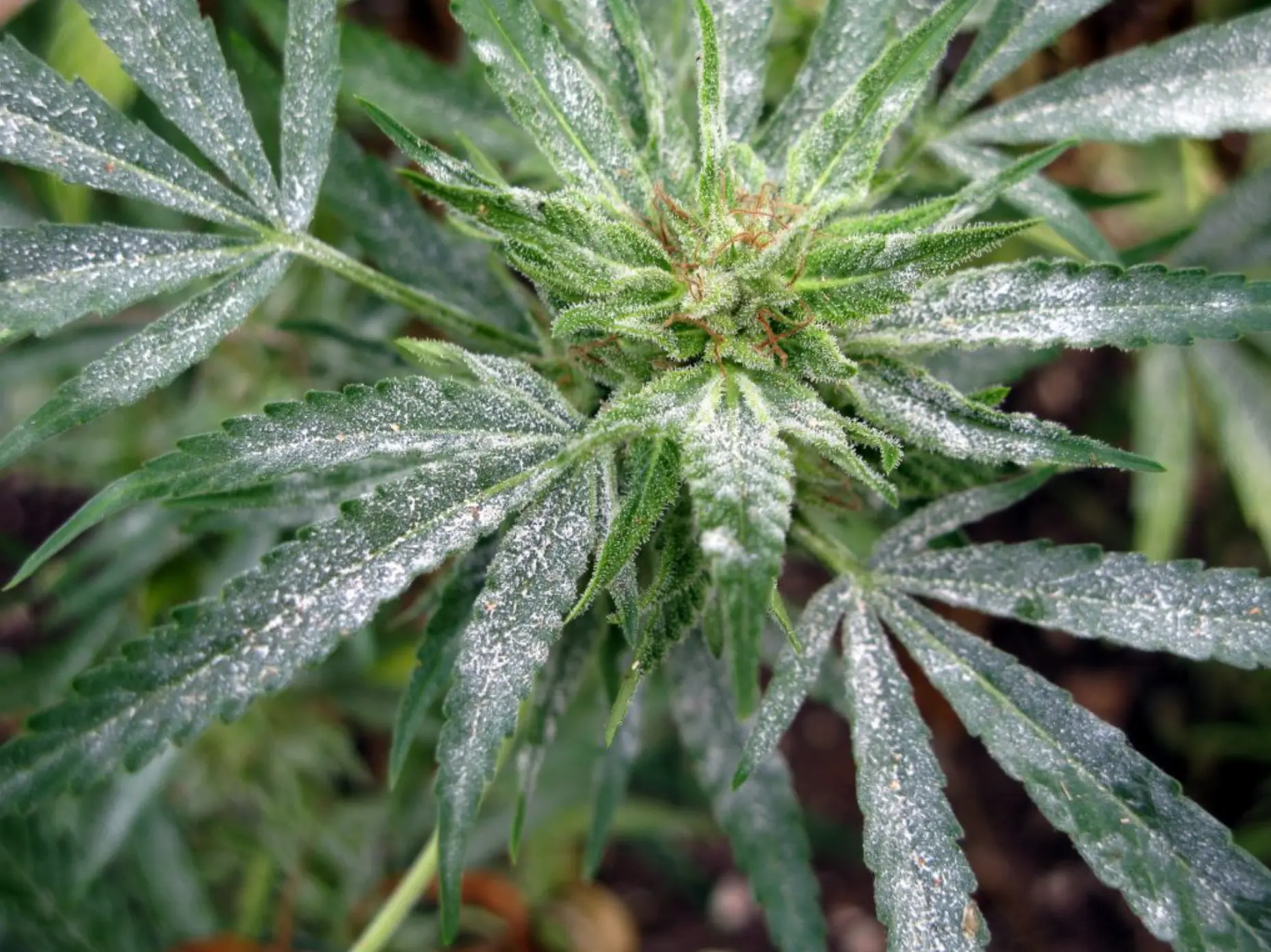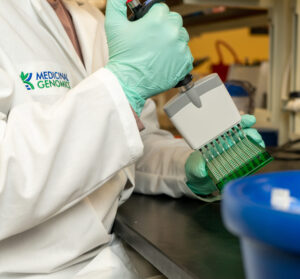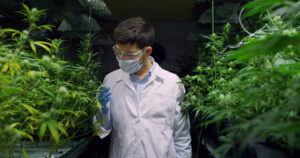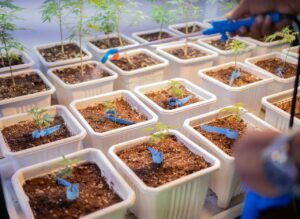Growers should become familiar with the common diseases affecting cannabis plants and recognize their symptoms. In order to detect disease BEFORE symptoms emerge, growers can use PathoSEEK qPCR Plant Pathogen Assays to detect harmful bacteria, molds, viruses, and viroids.
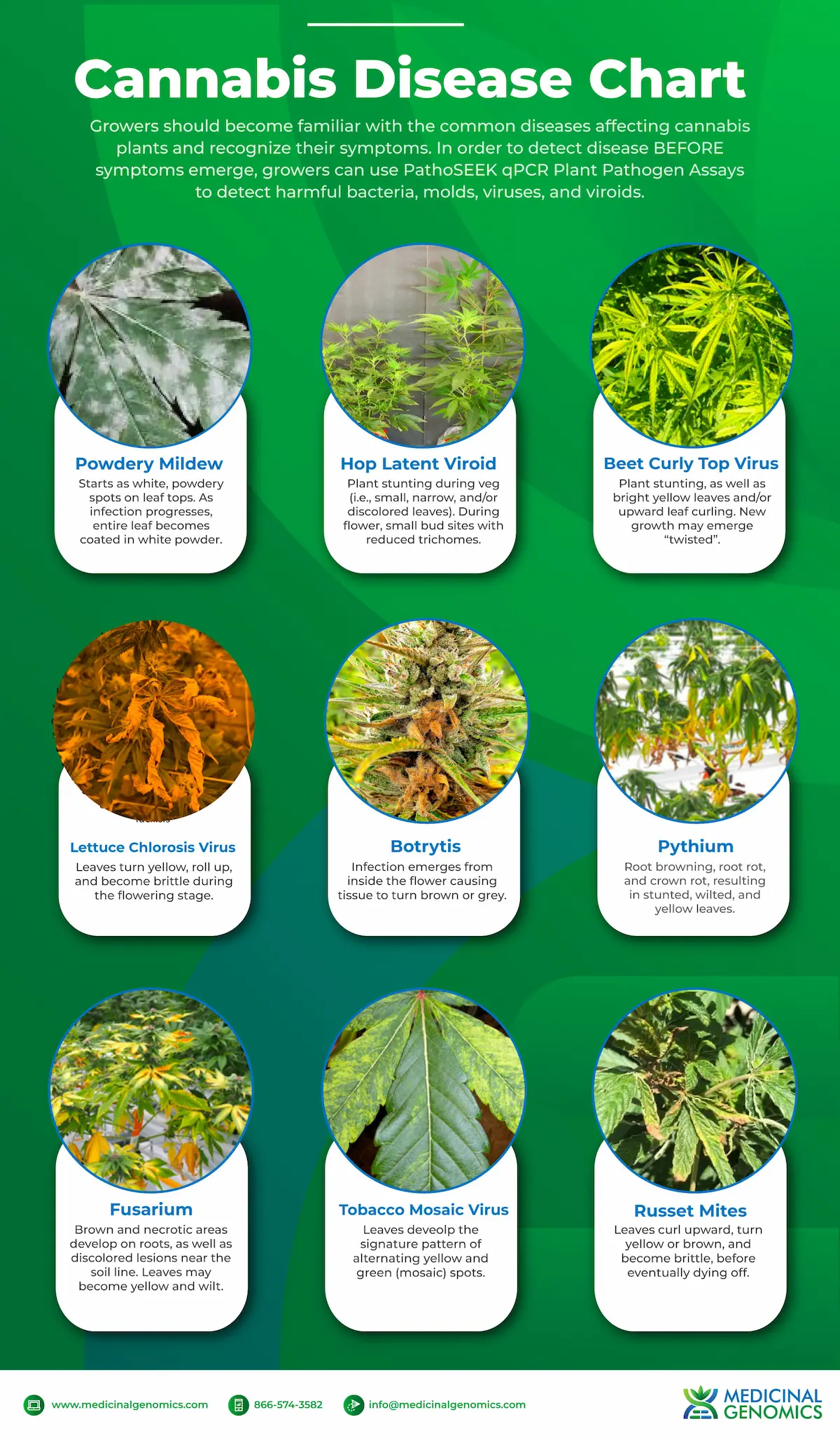
Powdery Mildew
Powdery Mildew is arguable the most destructive Cannabis pest. It is an obligate biotroph that can vascularize into the plant tissue and remain invisible to a grower. It tends to emerge and sporulate 2 weeks into flowering thus destroying very mature crop with severe economic consequences. It is believed to travel in clones and its is not known if it travels in seeds.
Starts as white, powdery spots on leaf tops. As infection progresses, the entire leaf becomes coated in white powder.
Hop Latent Viroid
As the name suggests, HLVd was first identified in the hop plant, but it can also infect cannabis, which is a relative of hops. In fact, some experts claim the effects of the disease are even more serious in cannabis, causing stunted plants with small, loose buds that have fewer trichomes. Once infected, plants can only be saved via a lengthy tissue culture process that will produce a new viroid-free plant.
Plant stunting during veg (i.e., small, narrow, and/or discolored leaves). During flower, small bud sites with reduced trichomes.
Beet Curly Top Virus
Cannabis infected with beet curly top virus are distorted. The leaves exhibit curling or twisting. Plants can have shortened internodes along branch tips.
Plant stunting, as well as bright yellow leaves and/or upward leaf curling. New growth may emerge “twisted”.
Lettuce Chlorosis Virus
Cannabis and hemp plants that are infected early will suffer stunted growth, but may not show visual signs until a few weeks into flowering.
Leaves turn yellow, roll up, and become brittle during the flowering stage.
Botrytis
This mold is often called “Bud Rot” or “grey mold”. It can remain cryptic or dormant for long periods of time before it sporulates. The infection starts within the bud, making it difficult to detect in the early stages of infection.
Infection emerges from inside the flower causing tissue to turn brown or grey.
Pythium
Pythium affects a broad range of crops, including greenhouse crops, ornamentals, and field crops. As a result, the host range of the Pythium species infecting cannabis is broad and pathogens may originate from and spread to other host plants.
Root browning, root rot, and crown rot, resulting in stunted, wilted, and yellow leaves.
Fusarium
The fungus can sit dormant in soil for years before becoming active and infecting a viable host plant. There is no effective treatment against fusarium.
Brown and necrotic areas develop on roots, as well as discolored lesions near the soil line. Leaves may become yellow and wilt.
Tobacco Mosaic Virus
TMV was identified in 1930, making it the first virus ever discovered. Scientists determined the virus was responsible for the infectious disease in tobacco plants after they observed its ability to reproduce and multiply inside tobacco cells.
Leaves develop the signature pattern of alternating yellow and green (mosaic) spots.
Russet Mites
Russet mites are resistant to most pest treatments and thus care must be taken to screen incoming material to a grow. Visual detection of mature mites is possible with 14X objective loupe but eggs and nymphs likely escape convenient optical detection. They are believed to be hosts for other plant viruses.
Leaves curl upward, turn yellow or brown, and become brittle, before eventually dying off.

